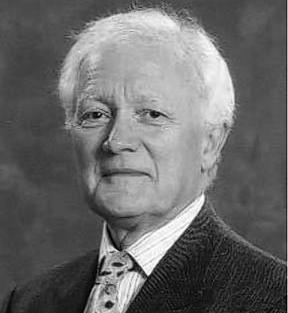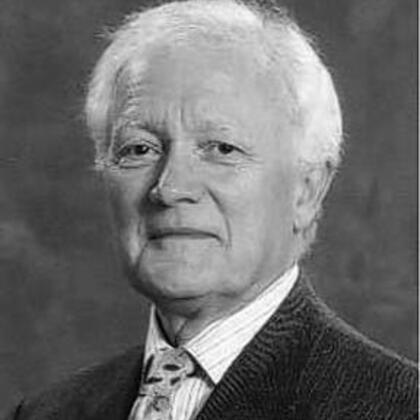A Symposium to mark the 350th anniversary of The Royal Society, examining the early days of Wadham College, Gresham College and The Royal Society, together with the life and work of some of the founders of The Royal Society.
This second part of the conference includes the following talk:
Being Economical With The Truth by Professor Michael Cooper
25 November 2010
Being Economical with the Truth: A Civic Virtue
Robert Hooke, early science and surveying
Michael Cooper
Presented at a Symposium to Celebrate the 250th Anniversary of the Royal Society, Wadham College, Oxford 25th November 2010
Preamble
Robert Hooke’s life could be described as one of hyperactive curiosity. His scientific ambitions were so wide ranging that they were generally unattainable, but his passion to understand the natural world stayed with him until the last year of his life. In the short time available I would like to look at another side of Hooke’s life that was orderly and meticulously recorded by him: his work as City Surveyor after the Great Fire of London. Measurements were essential in his surveying and in his science, so I shall discuss Hooke’s approach to measurement in both activities and draw some conclusions about his achievements.
Hooke’s scientific measurements
From the time of his childhood at Freshwater in the Isle of Wight Hooke had an exceptional intuitive understanding of mechanical devices. #2 When John Wilkins, Warden of Wadham College, met Hooke, a pupil at Westminster School, he was so impressed by Hooke’s ingenuity and knowledge of Euclid’s geometry that he gave him a copy of his book Mathematicall Magick. Despite its title, Wilkins wrote the book to show that virtue and wisdom can be found in methodical study and practice of mechanics. This was a lesson that Hooke learned and put to good use for most of his life.
He left Westminster School in 1653 with a choral scholarship and followed the well-trodden path to Christ Church Oxford. He was employed by the formative members of the Royal Society led by Wilkins at Wadham College. They needed Hooke’s ingenuity to make mechanical contrivances and instruments for their observations. Around 1657 Robert Boyle employed Hooke to assist him with his experiments on the properties of air in Boyle’s private laboratory in Broad Street Oxford. In 1660 Boyle published what would become known as Boyle’s Law: ‘the pressure on a quantity of air at constant temperature is inversely proportional to the volume of the air’.
Contrary to common belief, Hooke’s famous air-pump was not used in the experiments that led directly to Boyle’s Law. #3 For those experiments Hooke made a very large J-shaped glass tube. The shorter arm, about 300mm long, was closed at the end; the other arm, almost four metres long, was open at the top. The tube was set upright in the stairwell of Boyle’s laboratory. Small amounts of mercury were poured one after the other into the longer tube. At each stage, the position of the top of the mercury in each arm was recorded relative to scales marked out on strips of paper pasted to the outside of the glass tube. These scale-readings gave the volume and pressure of the air trapped in the smaller (closed) arm of the J-tube at each stage.
After the experiment had been reported in 1660, some objections were made as to its validity. In 1662 Boyle published a riposte to the objections. This time he included a table of measurements presented in a way that was unprecedented, but is now commonplace. #4 For each of the 24 stages in the experiment the measured pressure was printed alongside the hypothetical pressure (that is the pressure to be expected if Boyle’s Law were true). Readers were invited to consider the differences between each pair of values and decide for themselves whether or not to accept Boyle’s Law.
Details of the experimental procedure were published so that anyone could carry out new experiments and report their own findings. No further serious objections were made at the time, although Boyle’s Law has been modified since to make it more general. Soon after Boyle’s riposte was published, Hooke was appointed the Royal Society’s first Curator of Experiments.
#5 Hooke was a Baconian. In Micrographia (1665) and even in his diary he refers to Francis Bacon in respectful terms such as ‘the great Verulam’. The Royal Society was formed as an image of Bacon’s ‘Solomon’s House’, a fable in which mankind benefits from increased understanding of the natural world by experiment and observation, backed up by rational debate and the keeping of records. Hooke was an ardent seeker after truth about the natural world, but he knew he could never achieve it:
‘Wherever [the Reader] finds that I have ventur’d at any small Conjectures, at the causes of the things that I have observed, I beseech him to look upon them only as doubtful Problems, and uncertain ghesses, and not as unquestionable Conclusions, or matters of unconfutable Science’.
Hooke spent most of his life making better guesses of the causes of natural phenomena. Painstaking measurements often failed to justify his intuitive understanding because the materials he worked with were imperfect and his senses and reasoning inadequate:
... all the uncertainty, and mistakes of humane actions, proceed either from the narrowness and wandring of our Senses, from the slipperiness or delusion of our Memory, from the confinement or rashness of our Understanding, so that ’tis no wonder, that our power over natural causes and effects is so slowly improv[...]d, seeing we are not only to contend with the obscurity and difficulty of the things whereon we work and think, but even the forces of our own minds conspire to betray us.
Hooke’s aim fell short of knowing the mind of God. His many attempts to demonstrate the inverse-square law of gravitational attraction by timing bodies falling from different heights all failed for the reasons he stated above. He was both irritated and inspired by his failures. The first successful demonstration of the law of terrestrial gravitational attraction did not take place until 1990 when nine scientists from four institutions used Hooke’s method of timing falling bodies, but they also used laser interferometry, rubidium clocks, servo-motors, two mathematical models of the local geoid, a 300m-high radio tower in Colorado and a research grant with a very long alpha-numeric identification code.
Boyle and Hooke made more measurements than were necessary to verify Boyle’s Law. A recent statistical analysis of their experimental data has shown that they measured the positions of the mercury meniscus against the paper scales with a standard deviation of about 1½mm—a surprisingly high precision, even though we know that magnifying glasses were used. (Incidentally the scientists who carried out the 1990 gravity experiment in Colorado used a slightly modified version of Boyle’s Law in their calculations and they reported their results in the same way as Boyle and Hooke did in 1662but with added statisticsand left readers to draw their own conclusions.)
Hooke often used diagrams in his publicationsMicrographia is a superb example. The astonishing detail in its engravings is itself scientific evidence from which ‘uncertain ghesses’ can be made about how and why a natural object appears as it does. Micrographia soon became a best-seller, an entertaining subject for discussion at smart London dinner tables, but Hooke intended the illustrations to be looked at through the eye, rather than with the eye.
Hooke’s surveying measurements
When London was destroyed by the Great Fire in September 1666, Hooke was 31 years old, a pivotal figure in the Royal Society and well thought of by the merchants of London who had appointed him Gresham Professor of Geometry in 1665.
Only a few days after the outbreak of the Fire, Guildhall was in ruins. The Court of Aldermen held an emergency meeting in the room in Gresham College where the Royal Society held their Wednesday meetings. #6 The City installed London’s officials and clerks in Gresham College and ejected from their lodgings a few very peeved Gresham Professors. Gresham College became a place where City merchants, master-craftsmen and bureaucrats mingled with Royal Society courtiers, aristocrats and politicians. The country was at war and 80% of London was a smoking ruin. Sedition, fear and rumour were rife. Decisions of national importance had to be taken. Hooke, allowed to remain in his lodgings, was at the centre of affairs, and in a position to make his fortune.
In the two weeks following the Great Fire, six plans for a new city were presented. Three came from members of the Royal Society: Christopher Wren and John Evelyn showed their plans to the king; and on 19th September in Gresham College Hooke showed his plan to the Royal Society. Sir John Lawrence, a former Lord Mayor, was at the meeting and told the Society that the City preferred Hooke’s plan to the one produced by their Surveyor Peter Mills. The Royal Society and the City agreed that Hooke’s plan should be shown to the king. But all plans for building a new London were set aside. Parliament was unable to find money to pay for the second war against the Dutch as well as for a new city. Reluctantly the king, Parliament and the City all accepted a ‘middle way’: rebuilding would take place mainly on the old foundations.
The Privy Council appointed Wren as one of the three King’s Commissioners for Rebuilding. The City followed by appointing Hooke as one of the three City Surveyors for Rebuilding. The King’s Commissioners and the City Surveyors drafted new building regulations for Parliament. A tax on coal was levied to pay for new parish churches and public works. Plans were made for some new streets, others were to be widened or made straight. #7 Scantlings of three different sorts of houses were specified, to be built of stone or brick. Spaces were set aside for markets. New water and sewage systems were planned. The Fleet river, London’s main sewer, would be cleaned out and made navigable as far as Holborn. A new quay along the Thames was planned. The first major town-planning legislation was passed by Parliament, but its enforcement would require constant monitoring and measurement of work in progress.
Illness or private work distracted four of the original six men appointed to supervise the rebuilding of London, leaving Wren and Hooke effectively in charge. They soon formed an efficient working partnership. Their scientific interests shaped a common purpose to create a durable city that was orderly, clean and airy, more beautiful and more healthy than the ramshackle and chaotic mediaeval city lost in the flames. They trusted one another, and each in turn was trusted by the Court and the City. Wren designed grand public buildings, fit for a European capital city, using materials and methods that he and Hooke had studied as scientists. Hooke continued to give his Gresham Lectures and make instruments for his Royal Society experiments, but his morning job was to work for the citizens of London. #8 He staked out new streets to the widths specified in the rebuilding acts, measured areas of private land taken away for public use, settled building disputes, solved technical and managerial problems on construction sites, supervised the work of craftsmen and checked contractors’ bills of quantities, their invoices, fees and standards of workmanship. Hardly anything was built without Hooke’s supervision. Even, or perhaps especially, the locations of houses of common easement and laystalls were determined by him. The mutual trust between Wren, Hooke and their respective patrons held, despite crises of overspending on major works and difficulties with contractors. By 1674 most of London had been rebuilt, and Hooke was exhausted.
He had spent his mornings meeting citizens face-to-face on the streets at a time when they had lost their homes and businesses. Nobody could begin to rebuild until a City Surveyor had staked out, measured and certified the boundary of his property. Hooke provided this service to more than 3,000 citizens. He also measured and certified for compensation more than 300 areas of ground taken away by the City. He heard evidence in more than 600 building disputes and wrote reports to the City on his judgments and the reasons for them. These tasks were a sort of street theatre, performed before an audience of property owners, neighbours and passers-byprobably at least as critical a gathering as the audience at his Royal Society performances.
Hooke used simple traditional equipment for his survey measurements and recorded dates, citizens’ names, places and dimensions in his survey books. Later, in a coffee house or at Gresham College, he calculated areas of land for compensation using a formula that he knew would almost always give the wrong value. As City Surveyor he deliberately sacrificed accuracy for expediency, something that he went to great lengths to avoid in his scientific experiments. He could have found a more accurate value of an area of ground by taking additional measurements and using more complicated instruments and formulae, but he chose to be economical with the truth to save time. He has been criticized for not inventing new devices for the City Surveyors, but there was no need to do so. On the contrary, citizens were reassured to see the surveyors using the familiar measuring rods and tapes to determine the amount of compensation they would receive for the land taken from them.
At a time when citizens were desperate to rebuild their houses and begin trading again, there were many opportunities for Hooke to give priority service in return for a favour. Although he received an annual salary of £150 by the City, paid regularly every Quarter-Day, he was also paid fees by private individuals and institutions for his work. These fees were negotiable and varied between 5 shillings and five guineas. Searches in the City of London archives have produced no evidence that Hooke was anything other than scrupulously fair in his dealings with the public. He took up his tasks more or less in the order in which the requests for them were registered by the City. His fees depended on the amount of work involved, not on the wealth of his client. Most of his legacy of around £10,000 came in fees paid to him by the citizens and institutions of London. His income from the Royal Society was small and irregular and he had to sue Sir John Cutler for his salary as Cutlerian Lecturer.
Conclusions
When most of London had been re-built, Hooke convinced the City that they could administer London more efficiently if they had an accurate and detailed large-scale plan of it. #9 He persuaded some independent land surveyors who normally competed with one another to cooperate in a new kind of measuring scheme he had devised specifically for urban mapping. He engaged Wencelaus Hollar to engrave the printing plates and persuaded the City to commission the recently appointed Royal Cosmographer and former dancing instructor John Ogilby to organize a lottery to cover the costs of surveying and map production. #10 It is the first large-scale map of a British town or city which shows features drawn to scale, instead of as a bird’s-eye view. #11 The scale of the map is 1/1200 (1 inch on the map is 100 feet on the ground). It has become known as ‘Ogilby and Morgan’s map of London’. When the 20 separate map-sheets are joined together they cover an area of about 10 square metres. Hooke intended the map to be mounted on linen so that it could be folded and carried arounda sort of A to Z map of London Restored.
#12 Through my eyes this is more than an accurate map. Behind it lie thousands of measurements, calculations and drawing-office designs; committee meetings, arguments about costs; encroachment on neighbours’ properties and infringements of rights of access and of light. It is a consequence of the moral purpose in practical geometry and mechanics that the schoolboy Hooke had discovered in Wilkins’s book. For Hooke, scientific truth was unattainable, yet understanding of nature could be increased only by unremitting striving for truth through painstaking observation, assisted by ever-more accurate instruments and reasoned argument.
Through microscopes and telescopes Hooke and Wren sought understanding of the order and beauty of nature; by their own designs and construction of London’s new buildings and streets they created a more orderly and beautiful city. In civic life, Hooke knew that the urgent needs of homeless and penurious citizens could be met only if he were economical with the truth. To meet their needs I suggest that he did not so much compromise his principles, as show civic virtue.
© Michael Cooper, 2010
NOTES
i. Boyle, Robert (1660) New Experiments Physico-Mechanicall Touching The Spring of the Air ...
ii. Boyle, Robert (1662) A Defence of the Doctrine touching the Spring and Weight of the Air ... Against the Objections of Franciscus Linus ...
iii. Hooke, Robert (1665) Micrographia (Preface).
iv. The idea that good guesses about the causes of natural phenomena are the best to be hoped for can be found in fragments of the writings of the Pre-Socratic philosopher Xenophanes of Colophon around 580 BC:
‘The gods did not reveal from the beginning all things to us; but in the course of time, through seeking, men find that which is the better ...
‘But as for certain truth, no man has known it, nor will he know it, neither of the gods, nor yet of all the things of which I speak ...
‘And if by chance he were to utter the final truth, he would himself not know it, for all is but a woven web of guesses ...’
v. Ibid, fol. a(iv).
vi. Speake, C. C. et al (1990) ‘Test of the inverse-square law of gravitational attraction using the 300m tower at Erie, Colorado’ Physical Review Letters 65(16):1967-1971.
vii. Cooper, Michael A. R. & Ziebart, Marek (2006) ‘Messungen im 17. Jahrhundert Eine Analyse aus der Sicht des 21. Jahrhunderts’, Monumenta Guerickiana 116, Magdeburg.
viii. ‘ ... We are led to believe a lie‘When we see not through the eye ... ’(from William Blake’s Auguries of Innocence). The things Blake saw through his eye were very different from the reasonable explanations Hooke saw through his.
ix. I use ‘City’ as shorthand for London’s Lord Mayor, Sheriffs, Aldermen, Councilmen, their officials and offices, otherwise ‘city’ is used.
x. Birch, Thomas (1756-1757) The History of the Royal Society of London vol.2, p.115.
xi. The other two commissioners were Hugh May and Roger Pratt.
xii. The other two surveyors were master bricklayer Peter Mills who died in 1670 after a long illness, and the carpenter Edward Jerman who preferred to give his time to private commissions and was replaced by the glazier John Oliver in 1668.
xiii. Hooke used the ‘surveyors’ formula’ for calculating approximate areas of irregular quadrilaterals (no right-angle, no two sides equal in length, or parallel). The approximate area is calculated by multiplying together the average lengths of opposite pairs of sides. For example if the sides of a quadrilateral are successively a, b, c and d reckoned cyclically, then the surveyors’ formula gives the approximate area as A = ½(a + c) ½(b + d). This formula was first used about 5,000 years ago. It can never give a value for an area that is less than the true value.
xiv. Thurley, Simon (2004) ‘Saintly symbol of the city’ The Times Higher Education Supplement, 17 December, pp. 21-22.
xv. Compensation was usually paid at the rate of five shillings per square foot.
xvi. Ogilby died before the map was presented to the City. His grandson William Morgan took over Ogilby’s business.


 Login
Login







